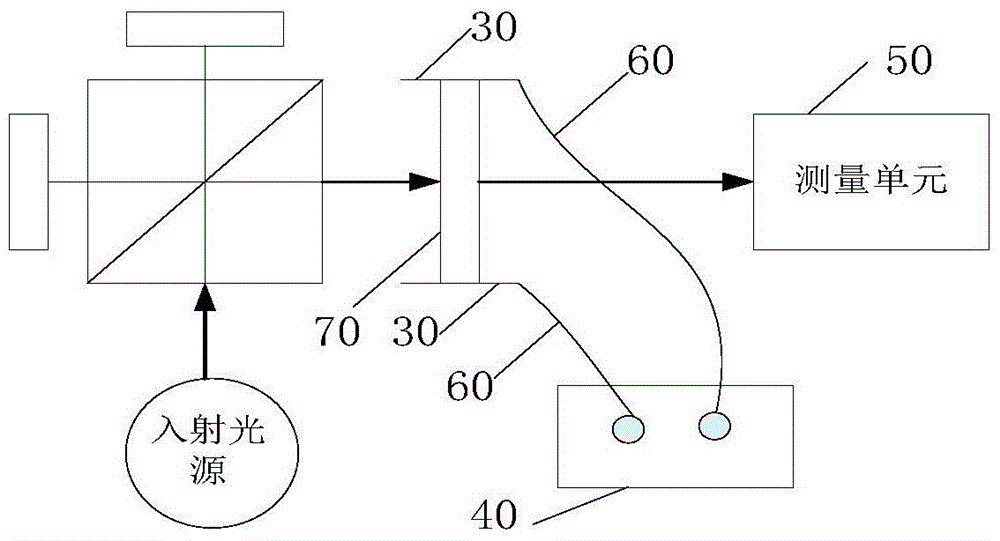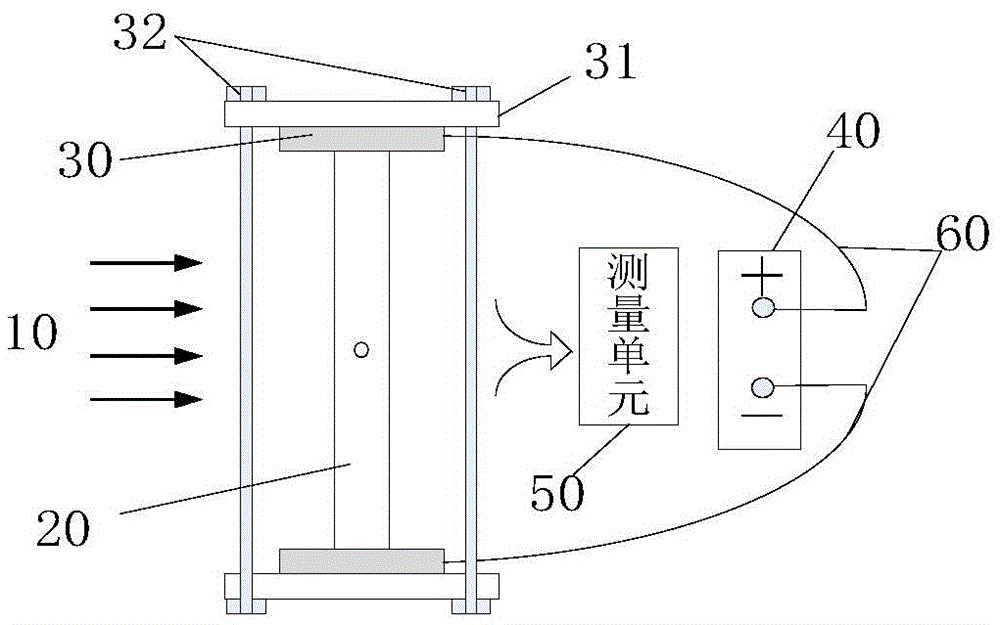Device for measuring liquid absorption coefficient under condition of external electric field
A technology of applied electric field and absorption coefficient, applied in transmittance measurement and other directions, can solve the problems of liquid absorption coefficient, design scheme and inversion method of absorption coefficient measurement device, etc., and achieve the effect of accurate measurement
- Summary
- Abstract
- Description
- Claims
- Application Information
AI Technical Summary
Problems solved by technology
Method used
Image
Examples
Embodiment 1
[0039] use as figure 2 device for measurement. Due to the high surface tension of the liquid, if the measuring cylinder is used to measure, some liquid will remain in the measuring cylinder, which will affect the accurate measurement of the thickness of the liquid. Therefore, in this embodiment, a certain amount of liquid to be measured is measured with a syringe and put into the quartz sample cell 20 middle. After the liquid spreads evenly in the sample cell 20, the positive and negative electrodes of the DC power supply are respectively connected to the platinum wires on the sample cell 20, and the voltage of the DC power supply is set to 0V. In order to improve the accuracy of the test results, it should be ensured that there are no air bubbles in the light-transmitting range of the middle area of the sample cell 20 during the test. If there are air bubbles in the liquid, they can be punctured with a needle. Put the quartz sample cell 20 into the spectrometer. If the s...
PUM
 Login to View More
Login to View More Abstract
Description
Claims
Application Information
 Login to View More
Login to View More - R&D
- Intellectual Property
- Life Sciences
- Materials
- Tech Scout
- Unparalleled Data Quality
- Higher Quality Content
- 60% Fewer Hallucinations
Browse by: Latest US Patents, China's latest patents, Technical Efficacy Thesaurus, Application Domain, Technology Topic, Popular Technical Reports.
© 2025 PatSnap. All rights reserved.Legal|Privacy policy|Modern Slavery Act Transparency Statement|Sitemap|About US| Contact US: help@patsnap.com



